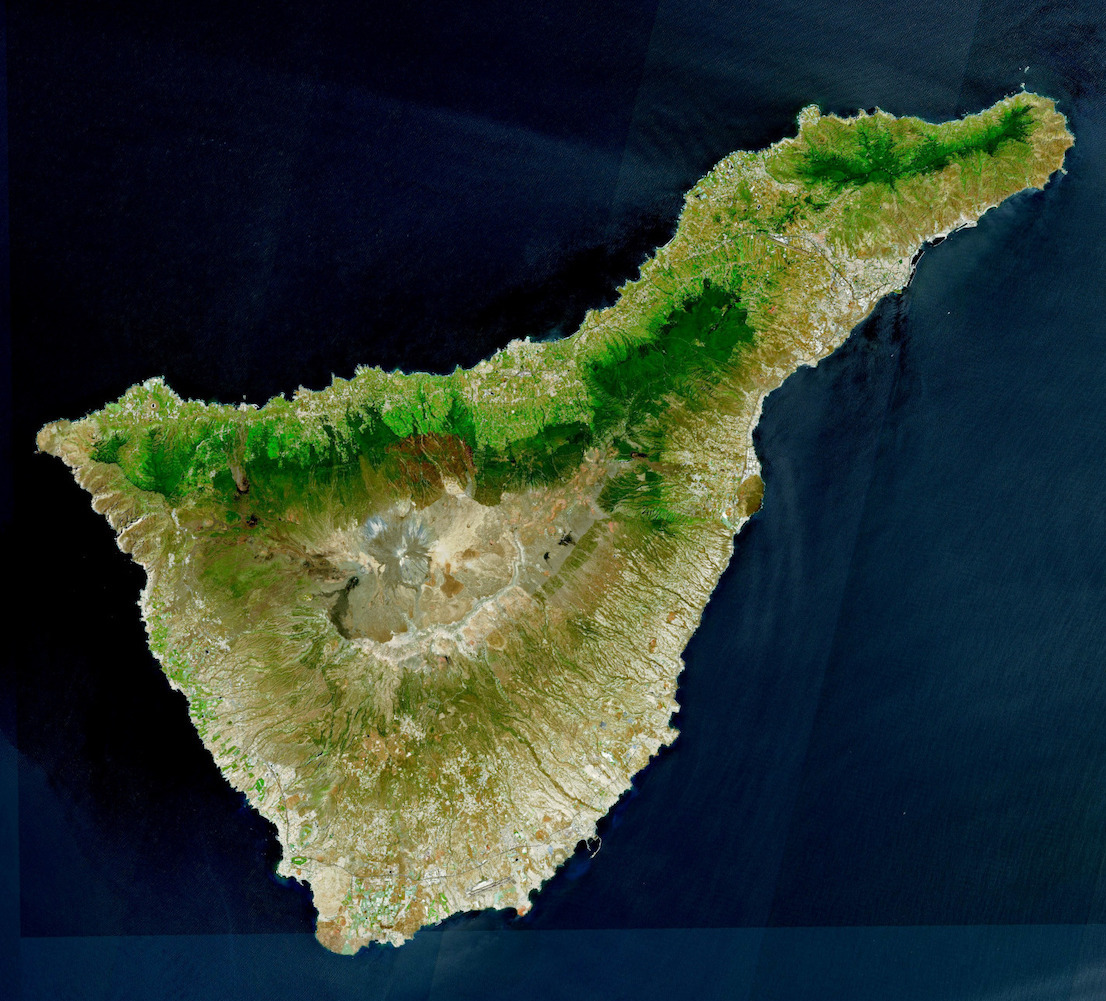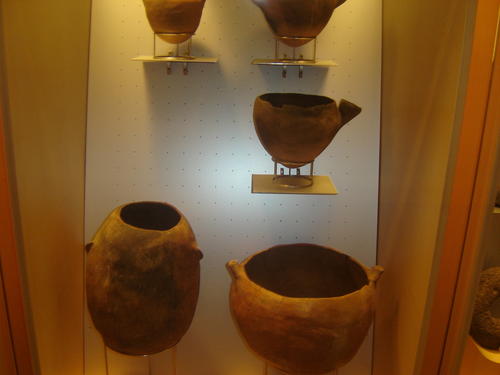|
Orotava Valley
The Orotava Valley () is an area in the northern part of the island of Tenerife, Canary Islands, Spain. The valley measures by 11 km, and stretches from the north coast to about 2,000 m elevation, at the northern foot of Pico del Teide. Background To the west and east, the valley is delimited by two steep escarpments, respectively the ''Ladera de Tigaiga'' and the ''Ladera de Santa Ursula''. The Orotava valley formed as the result of a large landslide some 560,000 years ago. The valley takes its name from La Orotava, the largest town in the area. Other towns are Los Realejos and Puerto de la Cruz. In the era of the Guanches, before the conquest by the Spanish in 1496, the valley was known as Taoro. It was here the conquest of Tenerife ended on July 25, 1496, with the between the Taoro mencey and Alonso Fernández de Lugo Alonso Fernández de Lugo (; died 1525) was a Spanish conquistador, city founder, and administrator. He conquered the islands of La Palma (1492–1 ... [...More Info...] [...Related Items...] OR: [Wikipedia] [Google] [Baidu] |
Tenerife
Tenerife ( ; ; formerly spelled ''Teneriffe'') is the largest and most populous island of the Canary Islands, an Autonomous communities of Spain, autonomous community of Spain. With a land area of and a population of 965,575 inhabitants as of April 2025, it is the most populous island in Spain and the entire Macaronesia region. Tenerife is also home to 42.7% of the total population of the archipelago. More than seven million tourists (7,384,707 in 2024) visit Tenerife each year, making it by far the most visited island in the archipelago. It is one of the most important tourist destinations in Spain and the world, hosting one of the world's largest carnivals, the Carnival of Santa Cruz de Tenerife. The capital of the island, , is also the seat of the island council (). That city and are the co-capitals of the Autonomous communities of Spain, autonomous community of the Canary Islands. The two cities are both home to governmental institutions, such as the offices of the preside ... [...More Info...] [...Related Items...] OR: [Wikipedia] [Google] [Baidu] |
Canary Islands
The Canary Islands (; ) or Canaries are an archipelago in the Atlantic Ocean and the southernmost Autonomous communities of Spain, Autonomous Community of Spain. They are located in the northwest of Africa, with the closest point to the continent being 100 kilometres (62 miles) away. The islands have a population of 2.25 million people and are the most populous overseas Special member state territories and the European Union, special territory of the European Union. The seven main islands are from largest to smallest in area, Tenerife, Fuerteventura, Gran Canaria, Lanzarote, La Palma, La Gomera, and El Hierro. The only other populated island is Graciosa, Canary Islands, La Graciosa, which administratively is dependent on Lanzarote. The archipelago includes many smaller islands and islets, including Alegranza, Islote de Lobos, Isla de Lobos, Montaña Clara, Roque del Oeste, and Roque del Este. It includes a number of rocks, including Roque de Garachico, Garachico and Roques de ... [...More Info...] [...Related Items...] OR: [Wikipedia] [Google] [Baidu] |
Spain
Spain, or the Kingdom of Spain, is a country in Southern Europe, Southern and Western Europe with territories in North Africa. Featuring the Punta de Tarifa, southernmost point of continental Europe, it is the largest country in Southern Europe and the fourth-most populous European Union member state. Spanning across the majority of the Iberian Peninsula, its territory also includes the Canary Islands, in the Eastern Atlantic Ocean, the Balearic Islands, in the Western Mediterranean Sea, and the Autonomous communities of Spain#Autonomous cities, autonomous cities of Ceuta and Melilla, in mainland Africa. Peninsular Spain is bordered to the north by France, Andorra, and the Bay of Biscay; to the east and south by the Mediterranean Sea and Gibraltar; and to the west by Portugal and the Atlantic Ocean. Spain's capital and List of largest cities in Spain, largest city is Madrid, and other major List of metropolitan areas in Spain, urban areas include Barcelona, Valencia, Seville, ... [...More Info...] [...Related Items...] OR: [Wikipedia] [Google] [Baidu] |
La Orotava
La Orotava is a town and a municipality in the northern part of Tenerife, one of the Canary Islands of Spain. The area of the municipality stretches from the north coast to the mountainous interior, and includes the summit of the Teide volcano, Canary Islands' and Spain's highest point at 3,718 m. At 207.31 km2, it is the largest municipality of the island of Tenerife. The population is 41,255 (2013Instituto Canario de Estadística ). The town La Orotava, which is the administrative centre of the municipality and also its largest settlement, is situated near the north coast, at about 400 m elevation in the [...More Info...] [...Related Items...] OR: [Wikipedia] [Google] [Baidu] |
Los Realejos
Los Realejos is a town and a municipality in the northern part of the island of Tenerife, which is the biggest town in the Canary Islands. It is part of the province of Santa Cruz de Tenerife (province), Santa Cruz de Tenerife, Spain. The town is located from the north coast, southwest of Puerto de la Cruz, west of La Orotava, and southwest of the island's capital Santa Cruz de Tenerife. The inhabitants are known in Spanish as ''realejeros''. The latest population count consists of 37,970 (2013Instituto Canario de Estadística ), its density being and the area is . The highest peak is . Los Realejos is the western terminus of the Autopista TF-5, TF-5 motorway. Background The town is split into two distinct areas or districts: *R ...[...More Info...] [...Related Items...] OR: [Wikipedia] [Google] [Baidu] |
Puerto De La Cruz
Puerto de la Cruz is a city and municipality in the northern part of the island of Tenerife, Canary Islands, Spain. It was formerly known by its English translation, "Port of the Cross", although now it is known by its Spanish name in all languages. Puerto de la Cruz is located on the northern coast, northwest of La Orotava and west of Santa Cruz de Tenerife. The Autopista TF-5, TF-5 motorway passes through the municipality. The population is 30,483 (2018). In Spanish, the local inhabitants are known as ''Portuenses''. With an area of , the municipality is the smallest in Tenerife. The elevation of the town's centre is above sea level and the highest point being Las Arenas, a volcanic cone with an elevation of . Historical population Economy Puerto de la Cruz occupies a prominent place in the history of tourism of the islands. The export economy established by the European colonizers after the conquest of the Canary Islands, conquest in the 15th century generated large com ... [...More Info...] [...Related Items...] OR: [Wikipedia] [Google] [Baidu] |
Guanches
The Guanche were the Indigenous peoples, indigenous inhabitants of the Spain, Spanish Canary Islands, located in the Atlantic Ocean some to the west of modern Morocco and the North African coast. The islanders spoke the Guanche language, which is believed to have been related to the Berber languages of mainland North Africa; the language became extinct in the 17th century, soon after the islands were colonized. It is believed that the Guanche may have arrived at the archipelago some time in the 1st millennium BC, first millennium BC. The Guanche were the only indigenous people known to have lived in the Macaronesian archipelago region before the arrival of Europeans. There is no accepted evidence that the other Macaronesian archipelagos (the Cape Verde Islands, Madeira and the Azores) were inhabited. After the commencement of the Conquest of the Canary Islands, Spanish conquest of the Canaries, starting in the early 15th century, many natives were outright killed by the Spanish ... [...More Info...] [...Related Items...] OR: [Wikipedia] [Google] [Baidu] |
Menceyato Of Taoro
{{Short description, Native kingdom of the Canary Islands Taoro was one of nine Guanche menceyatos (native kingdoms) in which the island of Tenerife (Canary Islands) was divided at the time of the arrival of the conquering Spaniards. Taoro was considered the most powerful aboriginal kingdom on the island. It spanned the existing municipalities of Puerto de la Cruz, La Orotava, La Victoria de Acentejo, La Matanza de Acentejo, Los Realejos and Santa Úrsula Santa Úrsula (; named after Saint Ursula) is a town and a municipality on the north coast of Tenerife. It is located 6 km east of Puerto de la Cruz and 24 km west of the island's capital, Santa Cruz de Tenerife. The population is 14,54 .... Its ''mencey'' (king) at the time of the Spanish arrival was Bencomo and the final mencey was Bentor, who ruled the kingdom from November 1495 until his suicide in February 1496. [...More Info...] [...Related Items...] OR: [Wikipedia] [Google] [Baidu] |
Mencey
The Guanche were the Indigenous peoples, indigenous inhabitants of the Spain, Spanish Canary Islands, located in the Atlantic Ocean some to the west of modern Morocco and the North African coast. The islanders spoke the Guanche language, which is believed to have been related to the Berber languages of mainland North Africa; the language became extinct in the 17th century, soon after the islands were colonized. It is believed that the Guanche may have arrived at the archipelago some time in the 1st millennium BC, first millennium BC. The Guanche were the only indigenous people known to have lived in the Macaronesian archipelago region before the arrival of Europeans. There is no accepted evidence that the other Macaronesian archipelagos (the Cape Verde Islands, Madeira and the Azores) were inhabited. After the commencement of the Conquest of the Canary Islands, Spanish conquest of the Canaries, starting in the early 15th century, many natives were outright killed by the Spanish ... [...More Info...] [...Related Items...] OR: [Wikipedia] [Google] [Baidu] |
Alonso Fernández De Lugo
Alonso Fernández de Lugo (; died 1525) was a Spanish conquistador, city founder, and administrator. He conquered the islands of La Palma (1492–1493) and Tenerife (1494–1496) for the Castilian Crown; they were the last of the Canary Islands to be conquered by Europeans. He was also the founder of the towns of San Cristóbal de La Laguna, Santa Cruz de Tenerife and Santa Cruz de La Palma. One biographer has written that his personality was a “terrible mixture of cruelty and ambition or greed, on one part, and on the other a great capacity and sense for imposing order and government on conquered lands,” a trait found in the conquistadors of the New World. Early life Fernández de Lugo was born in Sanlúcar de Barrameda, in Spain, during the reign of Ferdinand and Isabella, though his family was of Galician origin; his relatives, as his surname indicates, originated in the city of Lugo and other Galician locales. Nothing much is known of his youth. He enlisted i ... [...More Info...] [...Related Items...] OR: [Wikipedia] [Google] [Baidu] |







